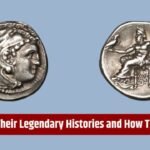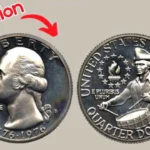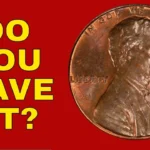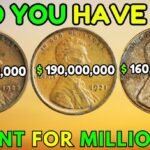When you think of spare change, you probably don’t imagine a single coin being worth more than your house—or even your entire retirement fund. But in the world of rare coins, that’s exactly the case with a special type of quarter minted nearly five decades ago. Known as the Rare Bicentennial Quarter, this humble piece of currency has stunned collectors by reaching potential values as high as $100 million.
At first glance, it may look like just another quarter with an unusual design. But dig a little deeper, and you’ll find a remarkable story involving American history, minting errors, silver content, and collector mania. If you’ve ever handled a quarter marked with the dual date 1776–1976, you might want to check it again—you could be sitting on a hidden fortune.
Let’s explore what makes the Rare Bicentennial Quarter so valuable, how you can identify one, and why it might still be sitting in someone’s pocket change.
The Bicentennial Quarter: A Symbol of America’s 200th Birthday
In 1976, to celebrate the bicentennial of American independence, the U.S. Mint released a set of commemorative coins, including a new design for the quarter. This special edition was not intended for regular long-term use, but as a limited tribute to the founding of the nation in 1776. Even though hundreds of millions of Bicentennial Quarters were struck, the design stood out as a once-in-a-generation event.
The Rare Bicentennial Quarter features a unique reverse (tails side) design showing a Colonial drummer boy, a patriotic image that replaced the standard eagle. Surrounding the drummer are 13 stars, representing the original thirteen colonies. On the obverse (heads side), George Washington still appears, but with a date like no other American coin: “1776–1976”. This dual-date stamp marked the 200-year anniversary of the Declaration of Independence.
While many of these quarters are common and still circulate today, only a handful fall into the “rare” category. It’s these few special coins that have stunned experts with valuations in the multi-million-dollar range.
Why One Rare Bicentennial Quarter Could Be Worth $100 Million
While it’s true that most Bicentennial Quarters are worth no more than face value, one Rare Bicentennial Quarter has reached mythic status in the collecting world—reportedly valued at up to $100 million. So what exactly makes one version of this coin so astronomically valuable?
1. Struck on a Silver Planchet
Most Bicentennial Quarters were made from standard copper-nickel clad composition. However, a limited number—intended for special collector sets—were struck on 90% silver planchets. Some were mistakenly released into circulation or misstruck using the wrong materials. These silver quarters are rare, heavier, and more reflective than the regular versions.
2. Minting Errors
Error coins are among the most collectible in numismatics. These include:
- Double dies, where the image or text is stamped twice
- Off-center strikes, where the design isn’t aligned properly
- Clipped planchets, where the coin is missing a section
Some Rare Bicentennial Quarters display one or more of these errors, which significantly increases their worth.
3. Proof and Uncirculated Quality
Condition plays a critical role in coin value. A Bicentennial Quarter in proof or uncirculated condition—meaning it shows no signs of wear and retains its original luster—is more desirable than one that’s been through decades of pocket use. Proof coins, especially those made at the San Francisco Mint, have mirror-like finishes and precise detailing that set them apart.
4. Historical Significance
Being tied to the 200th anniversary of the United States gives the Rare Bicentennial Quarter powerful symbolic value. It’s not just a coin—it’s a piece of living history, a reminder of the nation’s founding and the revolution that birthed it. This historical resonance attracts not only coin collectors, but patriotic investors as well.
When these factors converge—precious metal, flawless condition, production anomalies, and commemorative meaning—you get a coin that’s potentially worth an unimaginable fortune.
Could the $100 Million Quarter Still Be in Circulation?
Believe it or not, there’s a possibility that one of these ultra-valuable quarters is still out there in circulation. While most people assume rare coins are locked away in museum cases or high-end collections, that’s not always the case. Many people never bother to inspect their coins carefully. Change received from vending machines, gas stations, or grocery store clerks could include rare finds hiding in plain sight.
Think about how often you toss spare change into a jar or leave coins in your car’s cupholder. It’s entirely plausible that someone could be unknowingly sitting on a Rare Bicentennial Quarter that would be worth millions—if only they knew what to look for.
This is why collectors often refer to the search for rare coins as a modern-day treasure hunt. The odds might be slim, but the rewards can be extraordinary.
How to Identify a Rare Bicentennial Quarter
Now that your curiosity is piqued, how do you go about identifying whether the quarter you’ve just found is actually a Rare Bicentennial Quarter? Here are the key features to look for:
🪙 Date: 1776–1976
This dual-date is the first giveaway. If your quarter reads “1776–1976” instead of a single year like 1974 or 1980, it’s a Bicentennial edition.
🪙 Design: Colonial Drummer Reverse
Flip the coin over and check for the iconic image of a drummer boy. This design was created specifically for the Bicentennial coin and does not appear on any other quarter.
🪙 Mint Mark
Look for a small letter near George Washington’s ponytail on the heads side:
- “D” indicates it was struck in Denver
- “P” stands for Philadelphia (which may be absent)
- “S” means it was made in San Francisco (often proof-quality)
The “S” mint mark coins are generally more valuable, especially in pristine condition or if struck in silver.
🪙 Weight and Shine
Silver quarters are slightly heavier than their copper-nickel counterparts—around 6.25 grams compared to 5.67 grams. They also have a sharper shine, and the edges will not show the typical copper stripe visible on regular coins.
🪙 Condition
A high-grade, uncirculated, or proof coin with no visible damage, scratches, or fading is always worth more than a worn one. If your coin looks flawless, it’s worth checking its background.
🪙 Minting Errors
Watch for any irregularities:
- A doubling of text or images
- Off-center alignment
- Incomplete or clipped edges
- Blurred or ghosted visuals
These types of minting mistakes are highly sought after and can turn an ordinary Bicentennial Quarter into a collector’s dream.
If you find a coin that ticks multiple boxes above, it’s best to have it professionally appraised before making any decisions.
Coin Collecting Is Now a Hot Hobby (and Business)
With stories of the Rare Bicentennial Quarter making headlines, the interest in coin collecting has exploded in recent years. People of all ages are getting into numismatics, not just as a hobby but also as a potential investment strategy.
Thanks to social media, YouTube channels, and online marketplaces, it’s now easier than ever to learn about coins, share discoveries, and even sell them at auction. Some Rare Bicentennial Quarters have already sold for five to six figures at major auction houses.
Whether or not you strike gold with a $100 million coin, there’s still a lot to love about coin collecting. It’s educational, fun, and sometimes incredibly rewarding. The idea that a small piece of metal can tell a deep, historic story—and potentially change your financial future—is what keeps people hooked.
Final Thoughts: Check Your Change—It Might Be Priceless
The tale of the Rare Bicentennial Quarter isn’t just a wild collector’s fantasy. It’s a genuine opportunity to own a piece of American history that could be worth far more than you think. While the vast majority of Bicentennial Quarters are common, a select few are incredibly valuable due to their rarity, condition, minting errors, or precious metal content.
Whether you’re a seasoned collector or someone just curious about the change in your pocket, it’s worth taking a second look. Who knows? You could be holding onto a Rare Bicentennial Quarter that could change your life.
So the next time you receive a 25-cent coin with the year “1776–1976,” don’t dismiss it as pocket change. Examine it closely—it might just be your hidden treasure.
Disclaimer: All coin values mentioned are based on current collector market trends and may vary. Always consult with a professional numismatist or appraiser before making financial decisions based on coin valuation.
Some Important Link
| Telegram Group | Click Here |
| WhatsApp Group | Click Here |
| Home Page | Click Here |












